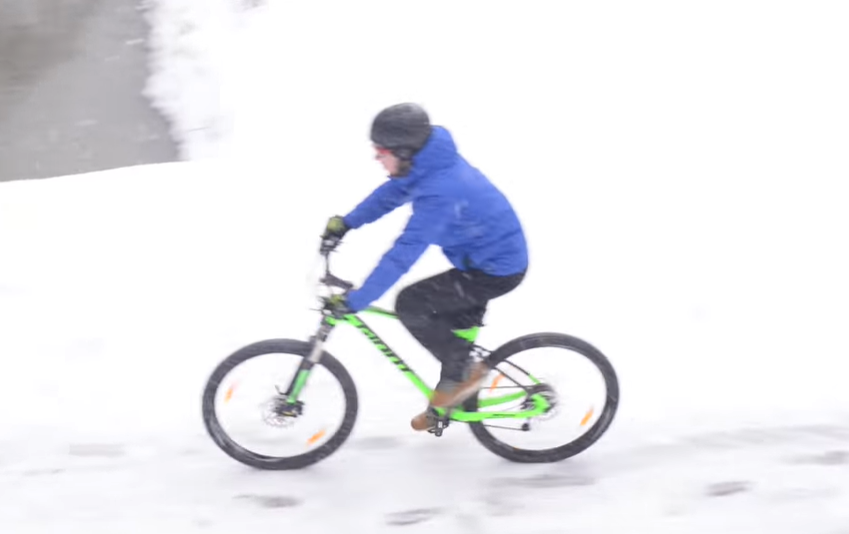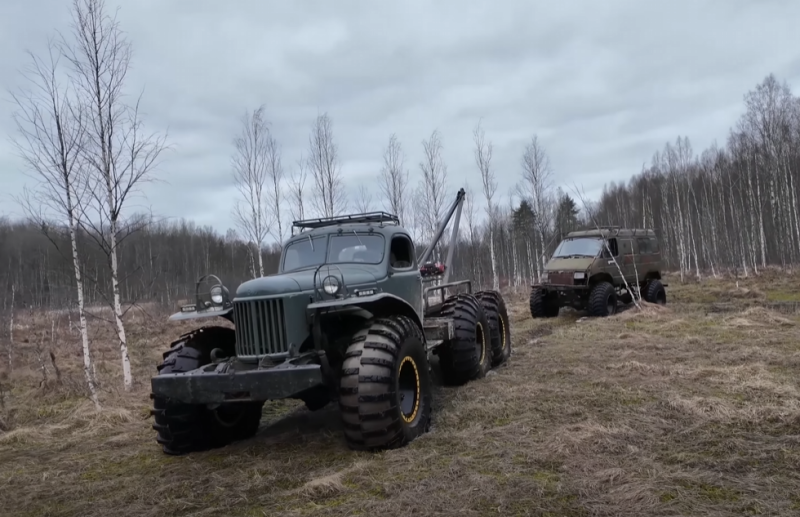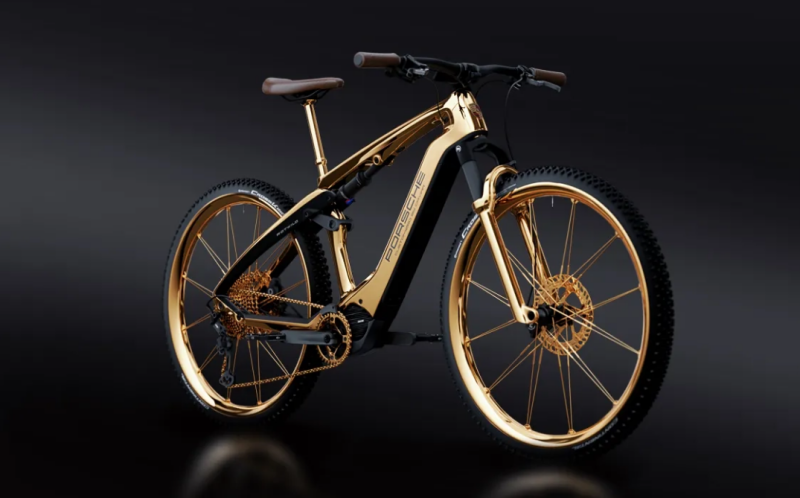Key Challenges
Let's first understand what scares a cyclist at the thought of a winter ride, and what difficulties really arise! The fact is that not everything is as scary as it seems. But, at the same time, there are certain nuances that beginners are not always aware of.
✅ The piercing cold is the first thing a rider thinks about, who knows that while riding, even a slight coolness is felt more clearly than during a leisurely walk. However, if you choose the right clothes, protect the most vulnerable parts of the body, it turns out that winter riding can be a joy.
✅ Slippery coating is the second logical fear. You don’t need to say goodbye to him: in winter, you really need to be doubly careful and careful on a bike. But subject to the right choice and equipment of transport, it is quite possible to provide good grip.
✅ Reduced visibility - if snow flies in your face, your eyes water from the cold air, it is difficult to enjoy riding. But such problems can be solved thanks to well-chosen equipment.
These are far from all the difficulties that cyclists who are not afraid of cold have to deal with. There are other nuances that are important to know for awareness and preparation for riding.
? Headwind - it is able to significantly change the course of movement, which is unsafe
? Vehicle wear and tear - the bike is adversely affected by moisture and dirt, low temperatures, chemicals
Some riders say that you can only ride in the winter on an old bike that has already become obsolete. There is some justice in this, although with proper preparation it is quite possible to protect vulnerable parts from premature wear.
Choice of transport
It is advisable to get a separate bike for riding in the cold season. It should be a strong and durable design with chain protection. Beginners will be most comfortable on an inexpensive "iron horse" with the following characteristics:
✅ From 3 to 8 speed modes
✅ low frame
✅ comfortable fit
If winter skiing captivates, develops its own style and format, then you can find a more expensive version to suit your preferences and needs.
To ensure comfort and safety, it is better to ride a bike with tires with a width of 35 mm or more. Thanks to the wide tires, the grip is more reliable, so the risk of falling is lower.

In cold weather, the planetary hub shows itself better. Photo: youtube.com
Naturally, it is necessary to monitor the wear of rubber, since only a high-quality tread does its job properly.
Do not forget about the mud and snow that flies from under the wheels. The mess does not only dirty the rider: getting on the cassette and chain, the ice porridge freezes, making it difficult to move and accelerate the wear of parts. Therefore, in winter you need to ride with wide and strong wings with mudguards.
Be sure to take care of equipping high-quality and powerful lighting equipment. You will need light even during the day in bad weather, and on winter evenings you cannot do without a good bright lantern.
Maintenance and storage
To prevent breakdowns, the bike needs regular cleaning and maintenance. Immediately after skiing, it is necessary to remove the remnants of dirt, snow.
Maintenance is more frequent in winter. It is advisable to repeat it every 150-200 kilometers. At a minimum, a full service is required twice per season: at the beginning and at the end. What is done during maintenance:
? It is necessary to disassemble and clean the bushings, steering, carriage
? Stretch the needles
? Re-adjusting the speed switch will not hurt
? Particular attention is paid to the chain, which is well cleaned and lubricated.
The most vulnerable point of the bike is the transmission. By itself, it has a relatively small resource. If the switches, shifters and cassette are clogged with dirt, work in dampness, freeze, the risk of premature failure is much higher.

You should buy a special lubricant for wet conditions or winter paraffin. Photo: youtube.com
By the way, the belief is erroneous that after riding the bike you definitely need to carry it into the house - to save it from the cold. If ice particles remain in the parts, they melt - water leads to corrosion. Therefore, it is better to put transport on an uninsulated balcony or in a garage, only if it is not damp there.
If there is no other place than in the apartment, a rag is laid under the bike - dirt and water will drain.
Driving rules
A well-prepared bike with wide tires is half the battle. It is equally important to master the specifics of skiing. General recommendations are:
✅ You should keep a large distance - the braking distance on winter roads grows 2 times compared to dry asphalt
✅ No need to gain extreme speed
✅ It is better to move on cleared surfaces, as it is much more difficult to drive on loose snow and crust
✅ Do not sharply turn and brake
Beginners are frightened by the very thought that they will have to drive along paths where you can slip even on foot. It is important not only to master the correct ride, but also to say goodbye to fear. If you move slowly and carefully, the cyclist is in no danger except to fall on his side. Even if the front wheel fails and the vehicle rolls over, the person will fall into the snow, which will soften the blow.

Special winter tires will provide maximum confidence. Photo: youtube.com
Now let's take a closer look at certain points that are important to know about skiing in winter.
How to brake
This is one of the first skills you should learn when you try to drive in the snow.
? On a straight section, you can apply both brakes, but first pressing the rear and then the front
? On a descent or on a curve, the rear brake works: it not only slows down, but also stabilizes the course
Since it is inevitable that moisture and snow will get on different parts of the bike in winter, this makes it difficult to manage and control. If the rim and pads are iced up, the brake will not work, no matter how you press the handle.

To ensure a larger contact patch in winter, it is recommended to keep the tire pressure level approximately 0.5 atm lower than in summer. Photo: youtube.com
To prevent this from happening, it is necessary to “burn through” the brake pads as a preventive measure. You need to press the handle and wait for this part to press against the rim, slowing down. Let it go through a couple of turns in this mode. Then there will be confidence that the brake will work at the right time.
How to move on different surfaces
The beginner feels most calm on the cleared asphalt. However, you can get out to other areas, having mastered the specifics of maneuvering:
✅ They ride on the ski track if it is dense and well-groomed. But here you need more strict control of the course
✅ It is a pleasure to move along the trodden and rolled forest paths, however, special care will be required when braking, on descents and ascents. If there is loose snow or “porridge” on the track, then the tread slips without having time to cling, which is why the bike skids
✅ In the city, it is recommended to move along the sidewalks, entering the carriageway only after mastering the skills and installing studded tires. The most insidious areas are at the curbs, where it is difficult to determine the height and edge of the obstacle. Therefore, the calmest and most confident thing is to stop and overcome the obstacle while guiding the bike with your hands.
Perhaps the greatest difficulty in driving on loose and viscous snow. If the rider knows how to ride in the mud, it will be easier for him to master the technique. It is recommended to move slowly, evenly rotating the pedals. Let the rear wheel be loaded, but the front should not be completely released either - this will complicate control.

When driving on snow, it is necessary to move the center of gravity, catching contact with a hard surface. Photo: youtube.com
Ice is an extremely dangerous surface. More insidious is the icy asphalt, hidden under a thin layer of fresh snow. To exclude serious injuries, you must learn by heart and follow the following recommendations:
? When driving through an icy area, do not pedal
? Avoid braking and do not turn the steering wheel
? It is important to move smoothly, without even jerking your body or head sharply.
Only if the ice is a bit rough, but without holes and mounds, can the area be overcome on horseback on an “iron horse”. But if he is covered in potholes, it is better to dismount without risking health and life.
Finally, we recall the need for good equipment, including glasses, a balaclava, warm gloves and thermal insoles. If the cyclist does not freeze and does not sweat, the walk will be a pleasure even in a snowy frosty winter. Even in the cold, we recommend taking warm tea and a snack with you: since it takes more energy to warm up, it will not hurt to refresh yourself.










